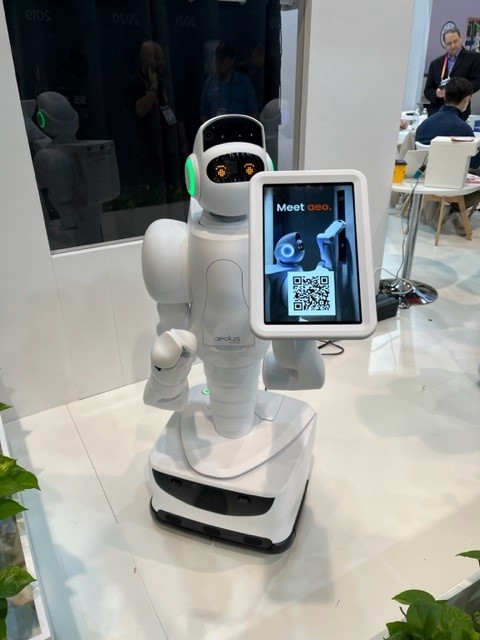
With more than 3,200 exhibitors across the floor at the Las Vegas Convention Center, as well as other venues up and down The Strip, it’s often challenging to identify tech themes at CES 2023.
But this year, if you were paying attention and connecting the dots, you would point to sustainability, electric vehicles (EV), health and wellness, and human security. That last one was a special theme in which CES partnered with the United Nations to focus on issues that include food security, access to health care, environmental protection, and political freedom, among others.
The more of these mega-events you attend, the more you begin to perceive patterns in the exhibits and even the language used to describe the technology that leave you jaw-dropping. Paul and I have the benefit of our relationship with CTA – the Consumer Technology Association – the team that puts our tours together and presents CES. We talk to them for months in advance of the event about what will be hot, what has receded, and the companies that will be exhibiting at CES.
Next week, Jacobs Media will be presenting our annual webinar to wrap-up CES Week. (Details and a registration link are at the end of today’s post.) That’s where we get the chance to tie it all together, and point to the themes that will affect our lives, our families, and our jobs. You won’t be surprised to learn that connected cars, artificial intelligence (AI), and yes, the metaverse were well represented at CES 2023.
But what drives these trends – the technology we’ll be thinking about months and months into the new year? And what actually drives these innovations, and how might they impact radio broadcasting, today and down the road.
 One of the most interesting patterns we picked up on is just how many tech themes this year were a direct or indirect result of the pandemic. COVID turns out to play a major role in the technology we use – and will be using. And if you think about our daily lives, our jobs, and the people who mean the most to us, you understand why.
One of the most interesting patterns we picked up on is just how many tech themes this year were a direct or indirect result of the pandemic. COVID turns out to play a major role in the technology we use – and will be using. And if you think about our daily lives, our jobs, and the people who mean the most to us, you understand why.
The pandemic shook us to our core. As I write this, we’re experiencing yet another chapter in this tragic saga. And while most of us are ostensibly “back to normal,” the waves of COVID continue, causing anxiety and friction in our lives.
Here are three pandemic-related tech patterns that became obvious to us as we walked several miles each day at CES 2023:
1. QR codes are BAAACK! – This technology was pretty much left for dead by 2019. The idea of taking a picture with your smartphone’s camera and opening up a website or other content just seemed like a pretty good idea that never really caught on.
website or other content just seemed like a pretty good idea that never really caught on.
The technology was first developed back in 1994 by Denso Wave, a division of Toyota, to keep track of car parts during the assembly process.
As a commercial or marketing tool – quick response or QR – this simple scanning was useful, but was not widely adopted. Many consumers simply did not understand how to use them. Still, by 2011, 14 million Americans had actually scanned a bar code.
But it wasn’t until COVID became a world terror that QR codes began their path to ubiquity. By the fall of 2020, a survey reported that nearly one-fifth (18.81%) of American and UK consumers had used QR codes, often in restaurants and retail operations as “touchless” interaction became popular.
And at CES this year, QR codes were everywhere – at virtually every exhibit, connecting attendees to brochures and more detailed information about products and services.
The photo at the top of this post isn’t showcasing robotics (a trend that has most definitely receded in recent years) – it’s another way exhibitors showed off their wares using QR codes.
By the numbers, this scanning technology has become popular among broadcast radio listeners as well. We are asking about them in our new Techsurvey 2023, now in the field. But we included the question in last summer’s Public Radio Techsurvey – and the results are impressive:
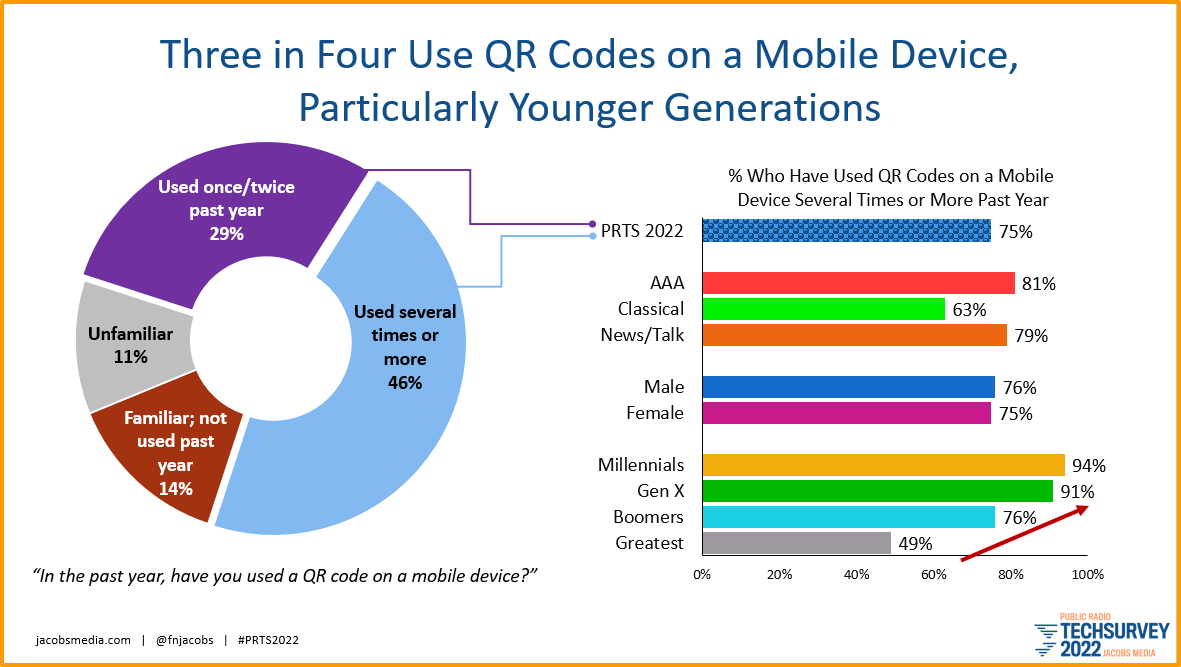
For radio, this “old” technology opens up all sorts of doors for marketing and promotions, downloading apps, making donations (for non-commercial stations), and other uses yet to be identified.
2. WFH just got easier – We couldn’t help but pick up on all sorts of connection innovation based around remote work. After all, companies continue to struggle with enticing their work forces to return to their cubicles and desks.
with enticing their work forces to return to their cubicles and desks.
And after spending time in Central Hall’s “tech city states” – LG, Samsung, Sony, and Panasonic – I’m not surprised. We saw several smart integrations of home and work, making it easy for any worker to connect with the resources they need, no matter where they are.
In the Samsung wing, we got a great demo (pictured below), of a computer at work seamlessly connected to a smart monitor, allowing a worker bee to access any content or resources in the office. Additionally, Samsung smart TVs can perform the same function, letting an employee do business from the sectional while watching “Wheel of Fortune.”
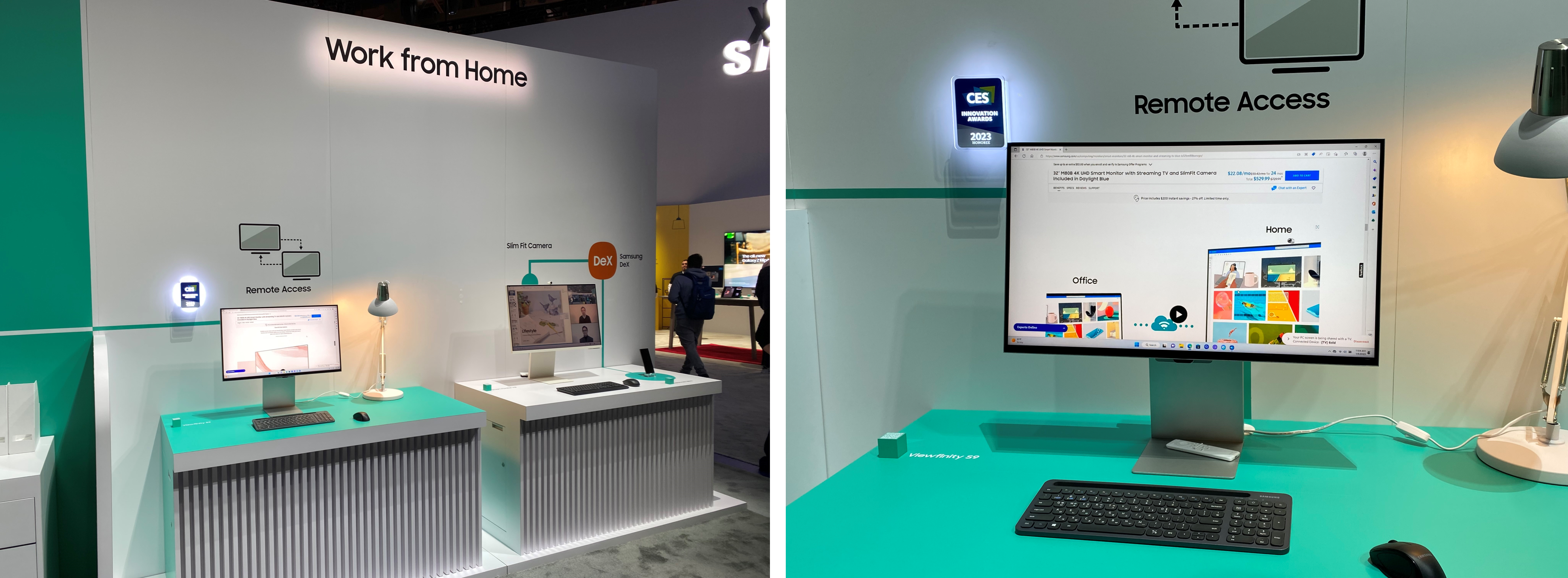
The disruption and redefinition of the workplace, and how we get things done is a key driver for related technology at CES.
3. Stress relief is the new black – You could see it in one display after another. So many of the devices, gadgetry, and technology are designed to help us CALM DOWN!
DOWN!
Yes, stress isn’t a new concept. But since COVID, in particular, our collective anxiety is off the charts. This sad reality was reflected in countless exhibits. In the health sectors, of course, there were umpteen beds, massage devices, and other innovations to help our physical selves renew and recharge.
But, of course, angst begins in our brains. You’ll be happy to know inventors at levels – from the bootstrap entrepreneurs in Eureka Park to the research and tech centers in the world’s biggest companies – are hard at work, trying to bring our stress levels down.
We see this front and center in the car. Heard of “road rage?” As we know too well, while cars provide sanctuary, they can also amp up anger and other negative energies we’d just as soon be rid of. Cameras aimed at the driver are becoming more and more common, measuring stress, distraction, and other emotional states.
From taking a more scenic route home to calling up a curated playlist of relaxing music (customized for any and all drivers), car designers are working overtime to help us regain our psychic equilibria.
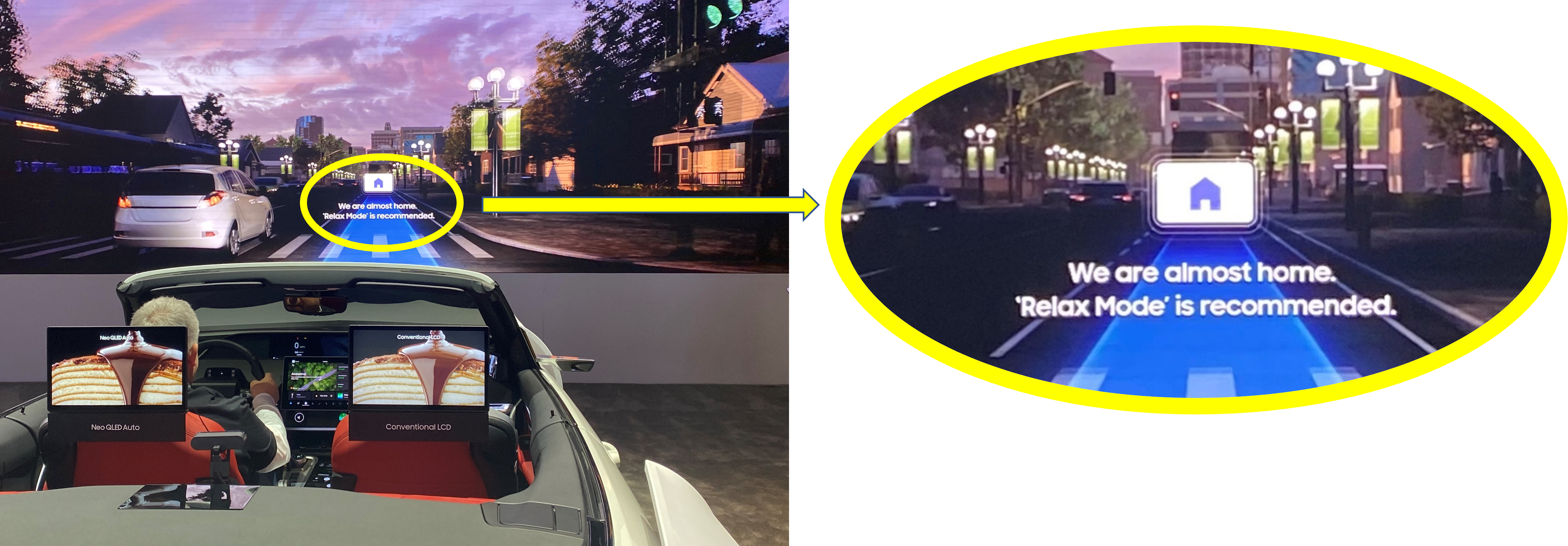
Given that radio is still “king of the car,” it’s important for air talent to be cognizant of the mental state of that growing (since COVID) morning and afternoon drive audience. And given the ongoing news cycle and our tendency to “doom scroll” while online, we will be looking for ways to de-stress for some time to come.
Join us for our free webinar, “Backstage at CES 2023: What Happened in Vegas,” Thursday, January 19th at 2pm ET. Registration is here.
Or use this QR code: 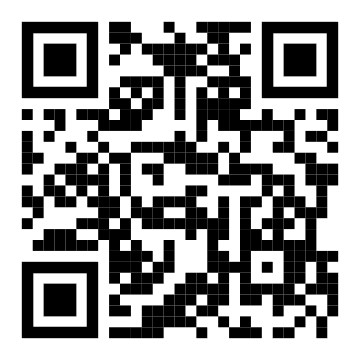
- What To Do If Your Radio Station Goes Through A Midlife Crisis - April 25, 2025
- A 2020 Lesson?It Could All Be Gone In A Flash - April 24, 2025
- How AI Can Give Radio Personalities More…PERSONALITY - April 23, 2025




Leave a Reply